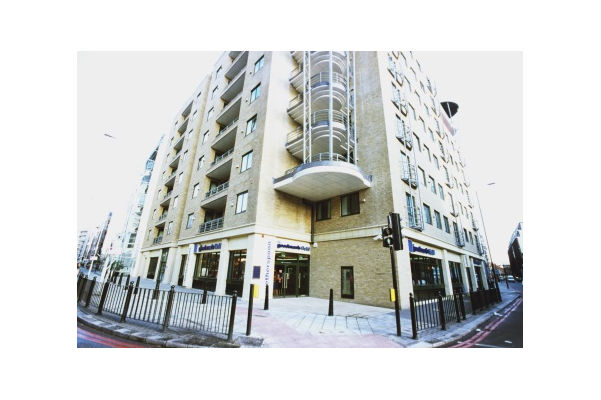This pub stands in the area originally known as Goodman’s Fields, named after Roland Goodman, who farmed the land here for the nearby nunnery.
A collection of prints and text about The Goodman’s Field.
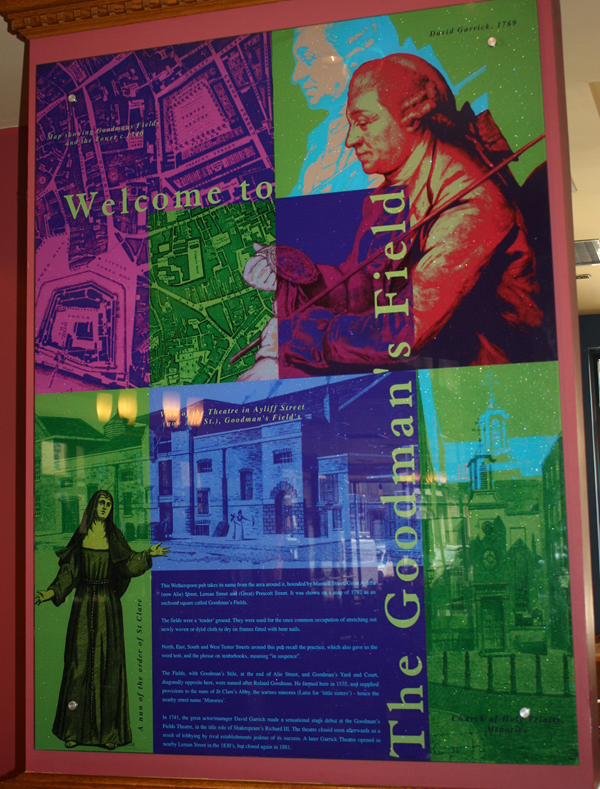
The text reads: This Wetherspoon pub takes its name from the area around it, bounded by Mansell Street. Great Ayline (now Alie) Street, Leman Street and (Great) Prescott Street. It was shown on a map of 1792 as an enclosed square called Goodman’s Fields.
The fields were a ‘tender’ Ground. They were used for the once common occupation of stretching out newly woven or dyed cloth to dry on frames fitted with bent nails.
The Fields, with Goodman’s Stile, at the end of Alie Street, and Goodman’s Yard and Court, diagonally opposite here, were named after Roland Goodman. He Farmed here in 1535, and supplied provisions to the nuns of St Clare’s Abby, the sorores minories (Latin for ‘little sisters’) – hence the nearby street name ‘Minories’.
In 1741, the great actor/manager David Garrick made a sensational stage debut at the Goodman’s Fields Theatre, in the title role of Shakespeare’s Richard III. The theatre closed soon afterwards as a result of lobbying by rival establishments jealous of its success. A later Garrick Theatre opened in nearby Leman Street in the 1830’s, but closed again in 1881.
The individual prints are entitled (clockwise, from top left): ‘Map showing Goodmans Fields and the Tower c. 1740’; ‘David Garrick, 1769’; Church of Holy Trinity, Minories’; View of the Theatre in Ayliff Street (now Alie St.), Goodman’s Field’s’; A nun of the order of St Clare.
A collection of illustrations entitled St Botolph’s.

The text reads: The 7th century Saxon missionary monk St Botolph is said to have been born in London. This may explain why five or six City gate churches, including the one near this Wetherspoon pub, were dedicated to him.
The original Saxon Church was replaced in medieval times, and became the headquarters of the London bell-founders. One of the two surviving bell-founders. One of the two surviving bell-founders in the country is nearby, on Whitechapel High street. The poet Edmund Spenser was born in the parish of St Botolphs in 1552, a few hundred yards from here, in East Smithfield. He is remembered for his six-book poem The Faerie Queene, written mostly in Ireland.
Another writer, Daniel Defoe, married in St Botolph’s in 1683. His account of the Great Plague (of 1665) was published in 1722. More than 5,000 victims were buried in huge pits in St Botolph’s Churchyard.
While St Botolph’s escaped the Great Fire of 1666, it fell into disrepair, and was replaced in 1741 by the present building designed by George Dance, seven years later, Jeremy Bentham was baptised there. Bentham developed the philosophy of Utilitarianism, arguing that “the greatest happiness of the greatest number is the measure of right and wrong”. One of the founders of London’s University college, his preserved body is still there, stuffed, clothed and seated in a chair.
Individual illustrations are entitled (clockwise, from top left): ‘Edmund Spenser’; ‘St. Botolph’s in 1810’; ‘Jeremy Bentham’; St Botolph’s in 1730’; ‘Daniel Defoe in the Pillory’.
A collection of illustrations entitled The Tower.

The text reads: Just around the corner from this Wetherspoon pub is the Tower of London. At its heart is the White Tower, built on the orders of William the Conqueror. Begun in 1077, it was finished twenty years later. The two outer defensive rings were built in the reigns of Henry III and Edward I.
The Tower subsequently served as garrison, armoury, prison, palace, mint, and observatory, and, until 1834, also housed a menagerie. Amongst the eminent people gaoled in the Tower were three queens of England – Anne Boleyn, Jane Grey and Elizabeth I. Henry VIII’s Lord Chancellor, Sir Thomas More, and the explorer, courtier and poet Sir Walter Raleigh, spent their last days here.
The Crown Jewels housed in the Tower include the ancient Ampulla and Spoon, used to anoint the new sovereign. Other major items are the swords of State, Mercy and Justice, the Orb and Sceptre, the Spurs, Rod, Staff, and Coronation Ring, and several Crowns.
Nearby Tower Hill was once a place of public hanging and executions. Most of the victims had previously been held in the Tower of London. The last executions on Tower Hill took place in 1747, when three supporters of Bonnie Prince Charlie’s rebellion – the Lords Balermino, Kilmarnock, and Lovat – were put to death.
The individual illustrations are entitled (clockwise, from top left): ‘The Mint at the Tower’; ‘The Tower Menagerie c.1820’; The Medieval Tower’; ‘King Henry III’s elephant’; ‘The Crown Jewels’; ‘The Execution of Lord Lovat, 1747’.
A collection of illustrations entitled The Old Gate.

The text reads: The area of Aldgate takes its name from the huge stone gate-house which once stood about a quarter-mile north-west of this Wetherspoon pub. It may have been one of the six gates built by the Romans in the walls which protected the city of London.
From 1374, the greatest English poet of the Middle Ages, Geoffrey Chaucer, rented rooms in the Aldgate, which had been rebuilt in the 12th century. Chaucer had just been appointed Controller of Customs and Subsidy of Woods, Skins, and Tanned Hides for the Port of London, and needed a residence near his work. However, he would already have been known to the area, as his father – a vintner and tavern-keeper, and deputy butler to King Edward III – owned many shops in Whitechapel.
The Aldgate was again rebuilt in the early 17th century but was demolished in 1761 as an obstruction to traffic. The areas of Aldgate and the neighbouring Whitechapel grew up as shanty-towns outside the City wall catering for travellers on the roads to the east. The original White Chapel stood a half-mile north-east of here, by White Church lane. It was replaced by St Mary’s Church, several times rebuilt, but finally destroyed in the Blitz.
St Mary’s Churchyard was the burial-place Richard Brandon, who lived near here in what is now Royal Mint Street. Brandon was the executioner of King Charles I.
The individual illustrations are entitled (clockwise, from top left): ‘Aldgate’; ‘Geoffrey Chancer’; ‘Aldgate, 1830’; ‘The execution of Charles I’; ‘Roman London’; ‘The gates of Medieval London’.
A framed print entitled St Botolph’s Church, and the Cass Charity School.
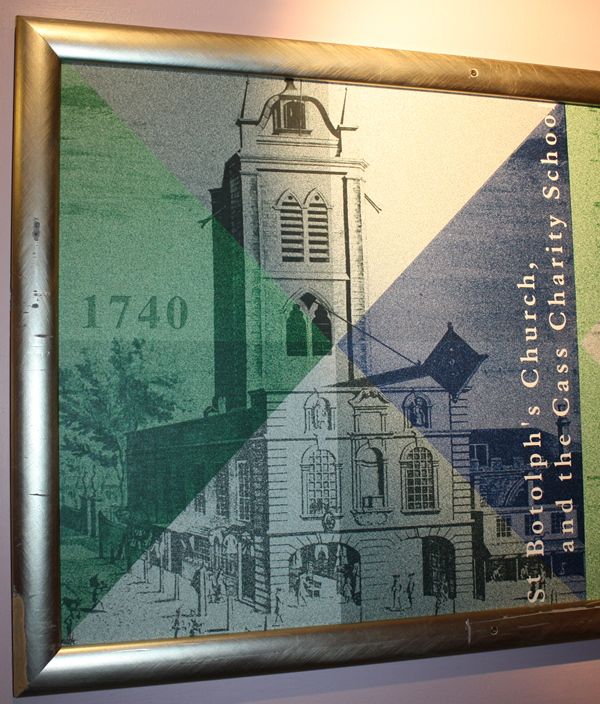
A framed print entitled The Old Fountain Inn in the Minories.

A framed print entitled 17th-Century Map of Aldgate and the Tower of London.
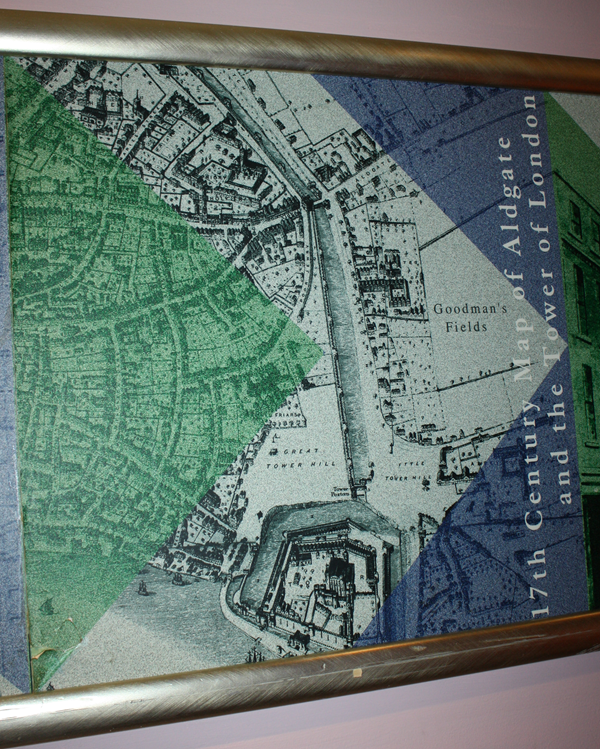
A framed print entitled St Botolph’s from the Minories.
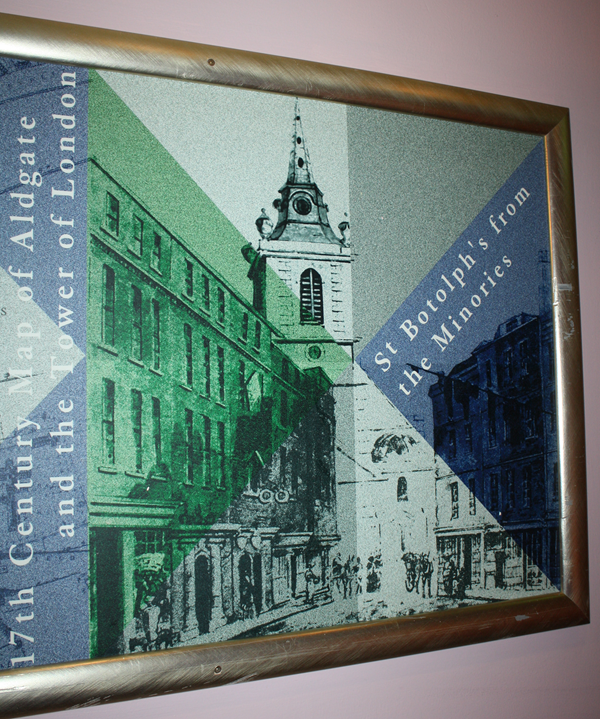
An external view of the pub.
